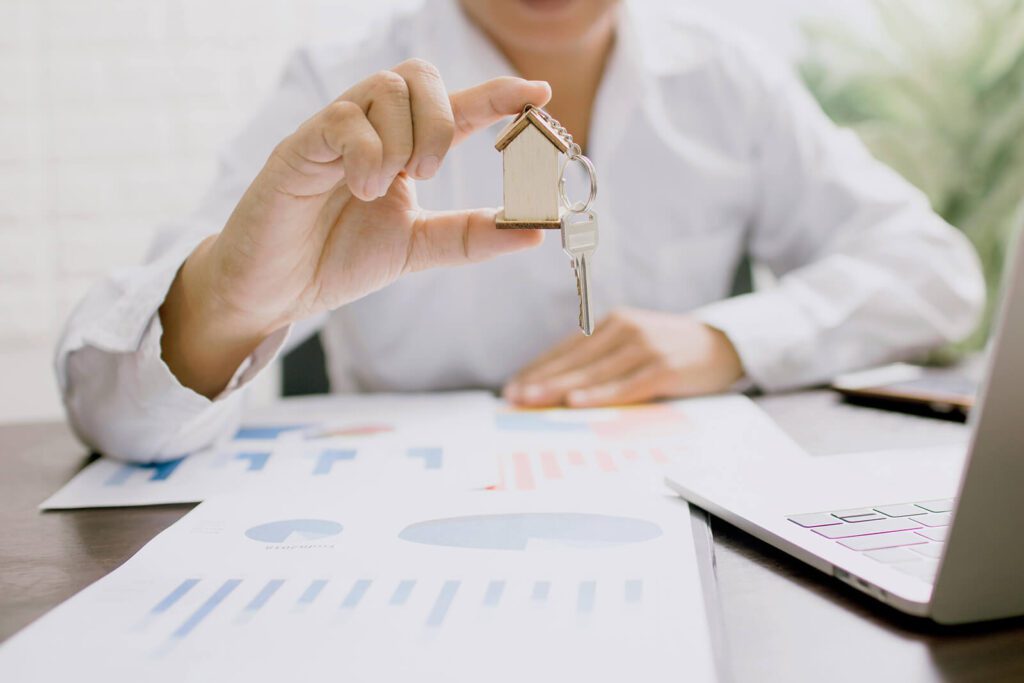First-Time Flipper’s Guide:
How to Start Smart & Maximize Profit
Get House Flipping Tips Straight to Your Inbox!
Table of Contents
Want more step-by-step guides like this?
Subscribe and get our full flipping toolkit
What is House Flipping: Basics
House flipping means buying a property, renovating (or repairing) it, and then reselling it “soon after” to make a profit. The goal is to buy at under market, add value, control costs, and sell at a higher price.
Important Terms:
ARV (After Repair Value)
What the house is worth once the improvements are done.
LTC / Loan to Cost / Loan to Value
How much funding you get relative to costs or value.
Holding Costs
The expenses you pay while rehabbing (loan interest, utilities, insurance, taxes)

Why Flipping Still Makes Sense (Even Now)
The housing market may feel uncertain, but house flipping continues to prove its staying power. In fact, flipping remains a consistent entry point for investors who want both speed and flexibility in real estate.
- Strong Market Share: In Q2 2025, house flips made up 7.4% of all U.S. home and condo sales despite lower profits from previous years. That means nearly 1 in 14 properties sold was a flip — proof that investors are still finding deals, even in competitive markets.
- Solid Profits in the Right Markets: The median gross profit per flip was $65,300. While margins are slimmer than peak years, that’s still a significant return when projects are well-managed. In markets with high demand — like Georgia, Alabama, and Ohio — first-time investors can carve out strong opportunities by focusing on entry-level properties.
- Demand Is Driving Opportunity: With inventory tight and many buyers looking for “move-in ready” homes, renovated properties sell faster and often attract multiple offers. For first-time flippers, that demand is an advantage — you’re solving a problem for buyers who don’t want the hassle of repairs.
The bottom line? House flipping is no longer about chasing giant windfalls — it’s about running a smart, repeatable system that builds wealth over time. For beginners willing to research, plan, and partner with the right lender, flipping remains one of the most accessible ways to enter real estate investing.

Key Steps First-Time Flippers Should Follow
Flipping can feel overwhelming at first, but breaking it down into clear steps helps keep things manageable. Here’s a simple roadmap to follow:
Market And Property Research
Start by researching local market conditions. Look at comparable sales (“comps”), demand in different neighborhoods, and overall price trends. Focus on areas where homes are selling quickly at healthy margins, since this will increase your chances of a profitable flip.
Budgeting And Planning
Before you buy, build a detailed budget that includes the purchase price, renovation costs, permits, inspections, and holding expenses such as taxes and insurance. Always leave a 10–20% buffer for unexpected repairs or delays.
Acquiring The Property
Properties suitable for flipping are often found through auctions, distressed sellers, foreclosures, or wholesalers. To avoid overpaying, follow the “70% rule”: never pay more than 70% of the property’s after-repair value (ARV) minus estimated repair costs.
Renovation And Rehab
Focus your renovations on improvements that bring the highest return, such as kitchens, bathrooms, and curb appeal. Work with reliable contractors, compare multiple bids, and make sure all permits are secured. Cutting corners on quality or legal requirements can cost more later.
Selling And Exit Strategy
Once renovations are complete, price the property based on comparable sales and consider professional staging to attract buyers. Plan for how long the home may stay on the market, and have a backup strategy in case it doesn’t sell quickly, such as refinancing or renting the property.
Common Mistakes & How to Avoid Them
Here are pitfalls many first-time flippers fall into, and how you can sidestep them:
| Mistake | Why It Hurts | How To Avoid It |
|---|---|---|
| Underestimating renovation & soft costs | Unexpected repairs, permit fees, and delays eat into profits. | Get multiple contractor bids; build in contingency (10-20%) + include soft costs (inspections, permits, carrying costs). |
| Overpaying for Property | If you pay too much, even good rehab won’t give you profit. | Use comps; apply the 70% rule; walk away if numbers don’t work. |
| Wrong Exit Timing | Holding too long kills profit via carrying costs. | Set a realistic timeline; monitor the market. |
| Hiring Poor Contractors or Not Vetting | Delays, bad workmanship, and budget overrun. | Check references; require written agreements; set milestones. |
| Skipping Permits or Due Diligence | Legal issues or sale delays; surprises that cost more. | Always check local permit requirements; inspect thoroughly. |
Financing: How to Fund Your Flip
For most first-time flippers, the biggest hurdle is figuring out how to pay for both the purchase and the renovation. Here are the most common financing options to consider:

Personal Cash or Savings
Using your own money is the simplest option. There’s no interest, no lender requirements, and you control the process entirely. However, this approach ties up your liquidity and may limit your ability to take on multiple projects at once.
Traditional Loans or Mortgages
These loans usually come with lower interest rates than private funding, making them appealing for long-term investors. The downside is that banks have strict credit and income requirements, and approvals can take weeks. Most traditional loans also won’t cover renovation costs, which means you’ll need another source of capital.
Fix & Flip Loans (Private or Hard Money)
Designed specifically for real estate investors, these loans typically cover both the purchase and rehab costs. They’re known for fast approvals and flexible terms, which can be crucial in competitive markets. The tradeoff is higher interest rates and shorter repayment periods, but for many first-time flippers, the speed and leverage outweigh the costs.
Bridge Loans or Short-Term Financing
These are temporary loans used to “bridge” the gap between buying and selling a property. They’re helpful if you need quick cash flow, but come with higher interest rates and fees. Bridge loans work best when you have a clear and quick exit strategy.
When evaluating financing options, compare interest rates, fees, repayment schedules (interest-only periods can ease cash flow), how much of the purchase and rehab costs are covered, prepayment penalties, and, most importantly, how quickly you can access the funds.
Real-World Profits and Pitfalls
Real-world data gives a clearer picture of what today’s house flipping landscape looks like:

Median Purchase vs. Resale
According to HousingWire, the median purchase price for flips was about $259,700. After renovations, those homes sold for around $325,000. That’s a gross profit of roughly $65,300 before accounting for renovation, financing, and holding costs.

Profit Margins at Historic Lows
Recent reports show that the typical U.S. flip has a pre-expense profit margin of around 25%, one of the lowest levels in decades. This underscores the importance of careful budgeting, efficient project management, and avoiding overpaying on the front end.

High-Performing Markets Stand Out
Some states continue to deliver stronger margins than the national average. For instance, flippers in markets like Houston, Texas, and Detroit, Michigan, are seeing faster sales and above-average ROI.
The Big Lesson:
While the days of “easy money” flips may be gone, disciplined flippers who plan well, buy smart, and stick to a budget are still making healthy returns. With the right financing and strategy, first-timers can carve out a strong foothold in this market.

Your Next Steps
Getting started in house flipping takes preparation, but you don’t have to do it alone. Here are three ways you can take action today:

Stay Connected
Join our mailing list to receive monthly market updates, exclusive insights, and early access to new financing opportunities. Knowledge is power—and staying informed gives you the edge.

Talk To Our Loan Specialist
Get personalized guidance on the best financing options for your project and learn how to maximize your first flip’s potential.

Apply for Financing
If you’re serious about moving forward, funding is the critical first step. Explore our Fix and Flip Loan programs designed to help first-time investors secure capital quickly and competitively.
Ready to flip your first property? Fill out our loan application today and take the first step toward turning your strategy into profit.

